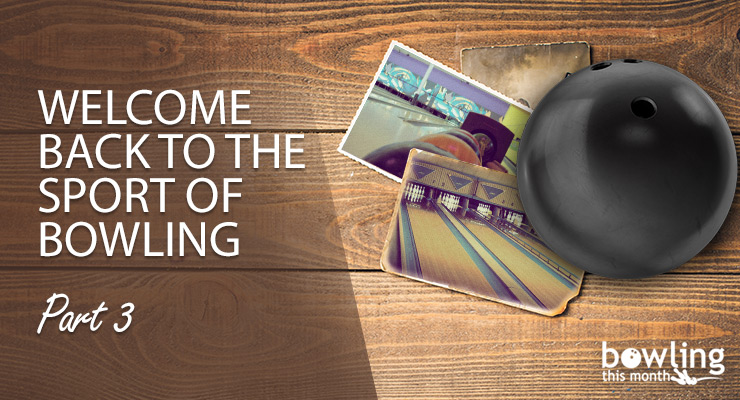Article Contents
- 1. The lane surface
- 2. Oil
- 3. What about the lefties?
- 4. Oil patterns
- 4.1. House shots
- 4.2. Sport shots
- 5. Welcome back!
Note: This article is only available to Bowling This Month subscribers.
As I mentioned last time, I started this article series to help bowlers who are just getting back into the sport after an extended break get up to speed on the modern game. With so many changes in our sport over the last several decades, I thought it would be helpful to lay out a few things that will help you get competitive—or at least bend the learning curve in your favor.
If you have been away from the sport for a decade or more, you will notice that scores have gone up—a lot. There are several reasons for this. Let’s take a look at some of them in detail below.
(Editor’s note: This article is the final installment of Ron’s Welcome Back to the Sport of Bowling series. To read the other articles in this series, please click the following links: Part 1, Part 2.)
The lane surface
If you are like me and you bowled with Fred Flintstone, you likely grew up bowling on wood lanes coated with polyurethane. While there are still many bowling centers around that have wood lanes, most lanes now are synthetic. In the wood lane days, bowlers used to look for the “track,” which was literally a groove worn into the polyurethane (or lacquer, if you really go back in time) created by thousands of balls thrown toward the pocket.
Today’s synthetic lanes are so hard and so tough that there really isn’t a track worn into the lane at all in most cases. With that hardness comes a totally different playing surface than you saw on wood lanes. The wood lanes had much more friction, especially in the worn track. Wood lanes literally had cracks between the boards that were sandwiched together where oil could seep, and synthetic lanes have no boards at all. The boards and other markings are printed on the surface. Synthetic lanes are made of the same material the entire length of the lane, whereas wood lanes were made of maple for the first part of the lane and pine for the last 45 feet or so. Maple was used in the heads because it is a much harder wood than pine and it could stand up better to being pounded by bowling balls.
Synthetic lanes are unbelievably tough. I have always said that I would love to have a car made out of whatever synthetic lanes are made of because door dings would be a thing of the past. You can drop a 16 pound ball from 10 feet in the air on a synthetic lane ...
Already a premium member? Click here to log in.


 (Only
(Only 